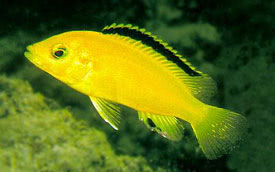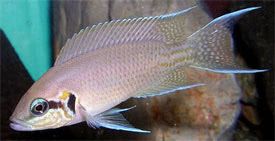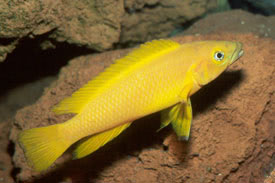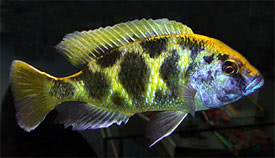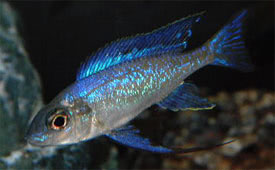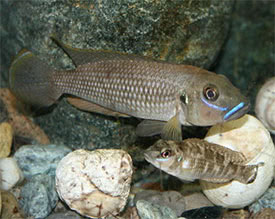
 Magyarul / Hungarian
Magyarul / Hungarian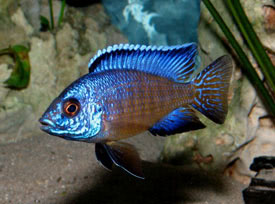
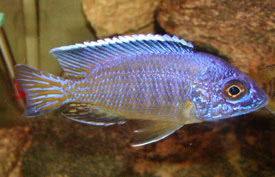
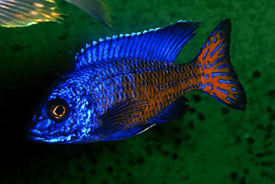
- Scientific name: Aulonocara stuartgranti
- Synonyms: Aulonocara hansbaenschi, Aulonocara steveni, Aulonocara maleri
- Common name: Peacock cichlid, Red shoulder malawi, African peacock
- Group: Cichlids
- Habitat: Africa; Lake Malawi
- Size: 13-15 cm, but usually smaller in aquaria
- Biotope: Rocky and sandy areas of Lake Malawi. Often found in caves.
- Social behavior: A fish that is peaceful, yet territorial. It can be combined with other medium sized cichlids. Retreats for each fish are important. Keep several females with one male.
- Diet: Live, bloodworms, mosquito larvae, crustaceans, snails, Tubifex, pellets, tablets
- Breeding: Easy
- Tank: Minimum 200 litres
- Population: 5-6 fish for 250 litres
- Decoration: The tank should have a rocky set-up with caves and shelter for hiding places. Hardy plants can be used as this fish will not usually bother them. This cichlid, like all those from Lake Malawi, prefer a coral sand substrate.
- Temperature: 25-26 °C
- pH: 7.5-8.5
- Hardness: 10-25 NK°
- Lifespan: 8-10 years
Description: An elongated, high backed cichlid. In males, the dorsal fin is elongated and pointed. The upper ridge of this fin a white while the rest is body colored. The body is indigo blue with 7-9 faint horizontal black stripes. Alternating with the blue scales, are red to pink scales that are not as numerous as the blue ones. The belly and the area immediately behind the gill cover are more red to pink scales. The other fins are the same color as the body. The females has less elaborate fins and is brownish-gray in color. The eye appears larger and the fins are brown or transparent.
Females are pale, while males are colorful-usually dark indigo blue.
The parents are ovophile mouthbrooders with a matriarchal family. The female spawns on the rocky bottom and performs mouth brooding responsibilities. The eggs are fertilized through the dummy-egg method. 20-60 eggs are incubated in the mouth for 20-22 days at 81-86°F (27-30°C). Start feeding the fry with Artemia and small dry foods.







